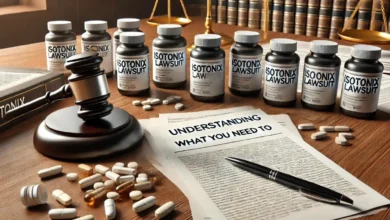Research Finds Oral Buprenorphine Use Linked to Tooth Erosion and Decay

In a startling discovery, recent research has uncovered an unexpected side effect of a widely used opioid addiction treatment. This finding could impact millions of patients. The medication, once hailed as a lifesaver, may be quietly eroding more than just addiction. It could also be deteriorating patients’ dental health right under their noses. In this article, we explore the concerning link between oral buprenorphine use and tooth erosion.
Buprenorphine/Naloxone Combination Medications for Opioid Addiction
Buprenorphine-naloxone combination medications, also known as MOUD (medications for opioid use disorder), are commonly used to treat opioid addiction. One such medication is Suboxone, which contains buprenorphine and naloxone.
Buprenorphine is an opioid substitution medication that binds to opioid receptors in the brain, reducing cravings and intoxication from other opioids like heroin. Naloxone is added to prevent tampering with or misusing the medication.
Buprenorphine was the first MOUD that could be prescribed in physicians’ offices, improving access to treatment. However, like all addiction medications, it works best as part of a comprehensive treatment plan, including counseling and other support services, such as those offered at facilities like a Malibu luxury rehab, where individuals can recover in a serene and supportive environment.
As per Harvard Health Publishing, MOUD has shown success in lowering overdose risks and supporting recovery. With over 100,000 annual opioid overdose deaths in the U.S., expanding access to effective treatments is urgently needed.
Suboxone helps people transition away from opioid addiction by occupying the same brain receptors as opioids, blunting the effects of other drugs. This allows many to rebuild stable lives free from the dangers of active addiction. Advocates push for wider Suboxone availability through primary care and emergency departments. More physicians need training to feel comfortable prescribing it as a life-saving treatment.
The medical community largely agrees that Suboxone saves lives by preventing relapses and overdoses. Removing barriers to prescribing, like waivers, aims to boost the number of providers and expand access as opioid deaths remain unacceptably high. MOUD shows promise in addressing the crisis when integrated with counseling in a comprehensive treatment model.
Association Between Sublingual Buprenorphine-Naloxone and Dental Health Outcomes
The researchers used a large US health claims database to identify over 21,000 new users of sublingual buprenorphine/naloxone. They compared them to users of other opioid addiction medications: transdermal buprenorphine (applied to the skin) and oral naltrexone. They monitored these groups for occurrences of dental issues over time.
The results showed a higher rate of dental problems like tooth decay or loss in the sublingual buprenorphine group than in other medication groups. As per JAMA Network, after adjusting for differences in patient characteristics, those taking sublingual buprenorphine had around 40-70% higher risks of dental issues.
Possible reasons include the fact that sublingual buprenorphine is acidic and needs to be held in the mouth for several minutes. This prolonged acid exposure could damage teeth over long periods. The study had some limitations but suggests long-term sublingual buprenorphine may increase dental risks.
The Rise of Dental Injury Lawsuits Related to Suboxone
Lawsuits involving dental complications from Suboxone rely on research exploring a potential link between the drug and dental issues. Recently, a federal judicial panel ordered that over a dozen lawsuits, including a Suboxone tooth decay lawsuit, be handled together in MDL. These cases are to be held in Ohio federal court.
The lawsuits claim that Suboxone’s formula, designed to dissolve under the tongue, is highly acidic. This acidity is alleged to cause dental problems like tooth decay, erosion, and tooth loss.
According to the complaints, the drug companies that make Suboxone are accused of failing to warn patients and doctors about these risks properly.
According to TorHoerman Law, the lawsuits specifically target Indivior Inc., the manufacturer of Suboxone. In November 2023, plaintiffs’ attorneys first requested that the cases be centralized in a multidistrict litigation.
At that time, Drugwatch says there were 15 relevant cases spread across five different court districts. As more evidence emerges, additional individuals are reportedly coming forward with serious dental injuries they believe were caused by taking Suboxone.
FAQs
1. What are some of the FDA warnings regarding buprenorphine?
A: The FDA has updated the labeling for transmucosal forms of buprenorphine to warn about an increased risk of dental issues. This warning applies even to those without a previous dental history. The issues include tooth decay, cavities, oral infections, and tooth loss.
2. What medication can reverse the effects of buprenorphine?
A: Naloxone is sometimes used to counteract the effects of buprenorphine. Depending on the situation, high doses of up to 10mg may be needed. If naloxone is not effective, supportive ventilation should continue.
3. What are the new prescribing guidelines for buprenorphine?
A: Under updated rules, providers can now prescribe buprenorphine to up to 30 patients. This is without first obtaining an exemption from the DEA by completing 8 hours of training for doctors or 24 hours for other providers. This expands access to medication-assisted treatment.
Medications like Suboxone have undoubtedly saved many lives by helping to treat opioid addiction. However, this research highlights an important unintended consequence that cannot be ignored. As with any treatment, we must carefully weigh the risks and benefits to ensure patients are fully informed and their long-term health is protected.
As the opioid crisis continues to devastate communities, expanding access to life-saving addiction treatments remains critical. At the same time, we must address oral health issues linked to these medications and support innovative solutions that minimize harm. Only through open discussion of challenges like these can we improve care for those suffering from addiction and build a healthier future for all.




